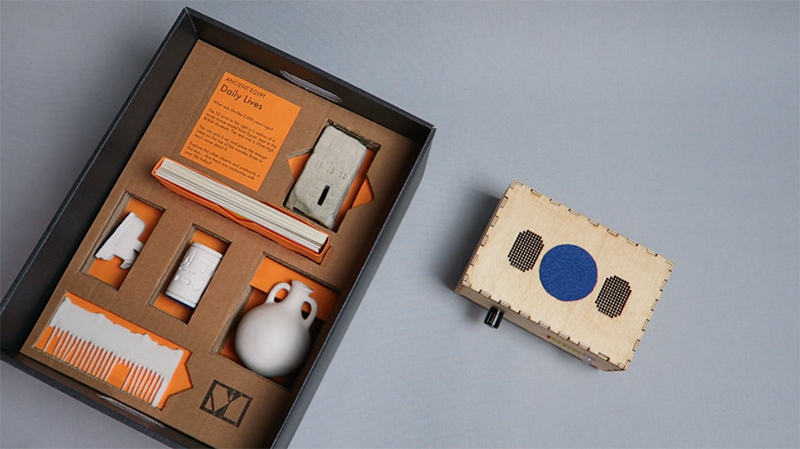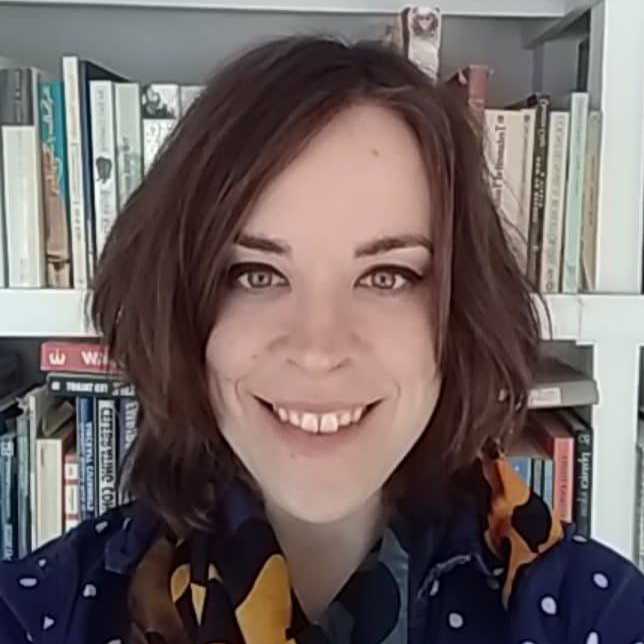What links a sarcophagus, a Millais painting, an exquisite Anglo-Norman manuscript, and a large tureen in the shape of a carp?
Seemingly nothing, but that is the joy of the Fitzwilliam Museum’s collections: something for everyone. But what would it be like for the collection to truly reach everyone? I am entirely thrilled to be one of four postdoctoral researchers holding a new AHRC-funded Creative Economy Engagement Fellowship, jauntily abbreviated to CEEF, at the Fitzwilliam. The aim of the fellowship is for us to work collaboratively with creative industry partners to design, develop and disseminate 3D solutions to problems we’re facing in the heritage sector. Roughly speaking, these come down to two things: getting people through the doors, and getting a wider variety of people through said doors.
For the next six months, I’ll be working full time on a collaboration with the thriving ed-tech company Museum in a Box. If you’ve never seen a museum in a box— here’s your chance. It is more fun than you can imagine, and even for a Gremlin like me (there’s a reason I work with manuscripts), very simple to use. You begin with a ‘Brain Box’—a programmable plywood box containing speakers, an NFC reader and a Raspberry Pi. For the uninitiated (and that included me until about a week ago): NFC technology is what allows contactless cards to work; a Raspberry Pi is a tiny, very powerful single board computer which you can program with all sorts of bells and whistles. They are wrapped up in a tactile box which can come in any colour and finish you like, even silicone, and look a bit like something you’d find at Bletchley Park.

Next, you obtain a Collection— a number of 3D printed objects, under a thematic heading (‘American Songbirds’ or ‘Statues of Suffragettes’, and so on). You can then tap (or ‘boop’) your printed objects on the Brain Box, and, rather thrillingly, they speak to you. Because each object has an NFC sticker somewhere about its person, the Brain Box can recognise which of the objects you’ve booped, and tell you about them accordingly. Like all of the finest ideas, it’s both fiendishly clever and brilliantly simple. Museum in a Box have already collaborated with the Smithsonian, the British Museum, Jewish Museum London, the National Museum of Iraq; if you’d like to see one in action, have a look on their website.
For this fellowship, I’ve been thinking about what it might be like to send the Fitzwilliam, in bits. A rolling box of 3D printed objects from the collection, through your letterbox, for you to ‘boop’ (on a box you rent or buy from Museum in a Box) and learn from. Maybe a ‘Surprise Me’ function (much like the random Wikipedia page generator), or maybe one you choose yourself from our ever-expanding list of boxes. Send them back for another set, or buy them for keeps. Subscription services are ubiquitous, from mascara to cheese to fancy socks; why not build on that same ‘unboxing’ buzz, and immerse yourself in a harmless bit of culcha while you’re at it? Jokes aside, what a brilliant thing for people who can’t come to the museum. Personally and professionally, I’m committed to access, especially for those who don’t receive the wider cultural provision that so often we take for granted in the University. This might be because of a disability, or geography, or finances, or a combination of those; no matter. With this collaboration, I’m hopeful that we can go some ways to bringing the Fitzwilliam to everyone.
That’s not to say we can’t use this technology to advance and enhance visitors’ experiences. My goal is to eventually have a Countdown to Cambridge option for the boxes. You would receive a miniature version of an object in the museum (your ‘Boop Buddy’), and when you come to the galleries, you could boop your Buddy on a designated Brain Box next to the original object (#bigboop). Primed and programmed to recognise you, the object and your Buddy could then communicate, or even say hello to you. I can’t be alone in finding almost excessive joy in the prospect of being greeted by a mummy, but there you go.
But this is a while off yet. For now, we’re hitting the ground running—designing the contents of the collections boxes, working with our talented and generous Keepers to choose the objects, plotting our outreach strategy, drawing up lists of unsuspecting victims for our focus groups (do get in touch if you’re keen; we will be running some pop-up events for feedback over the coming months), meeting with George of Museum in a Box for a field trip to the local Makespace…it’s all go, and we’re only on week two. I can’t wait to share our progress with you here on the UCM Blog, but also through some Instagram videos and behind-the-scenes tweets. Meanwhile, please send me (at alg66@cam.ac.uk or @FitzMuseum_UK, #CEEF) what kinds of things you’d like to see in the boxes; I’ll also accept lawyers, guns, money, snacks, voice actors, the loan of your dog, and picture postcards. Till next time!







